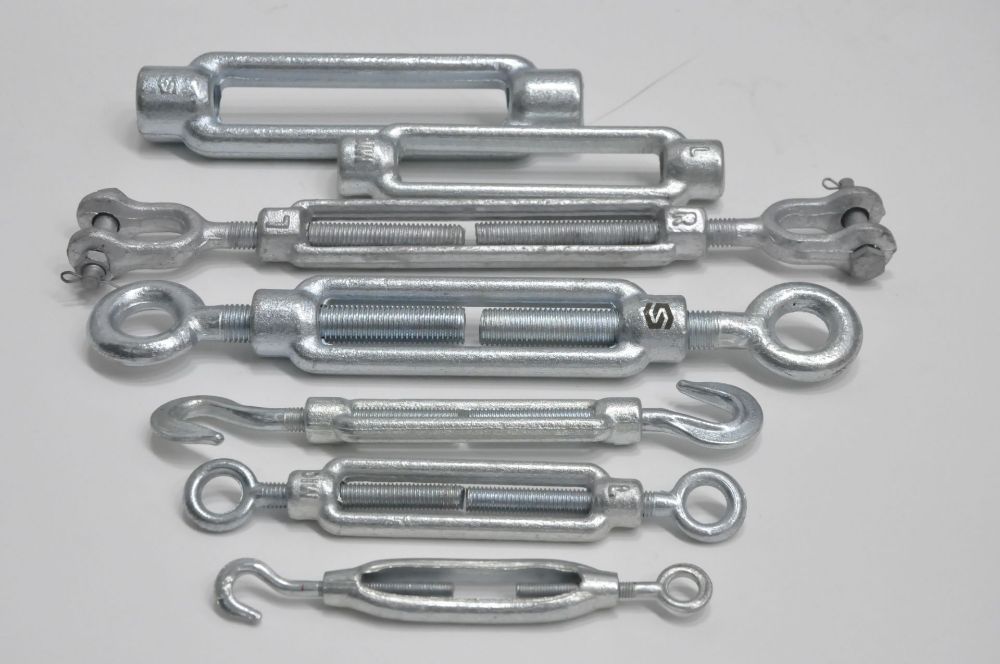In mechanical engineering and construction, a turnbuckle is a device used to adjust the tension or length of ropes, cables, wires, and other tensioning systems. It consists of two threaded eyelets, one on each end of a metal frame, with a central threaded section that can be rotated to shorten or lengthen the turnbuckle.
Turnbuckles are commonly used in rigging applications to tighten and adjust the tension of cables or wires. For example, in sailboat rigging, turnbuckles are used to adjust the tension of the shrouds and stays that hold the mast in place. Turnbuckles are also used in construction to tension steel cables used in suspension bridges, tower cranes, and other large structures.
To use a turnbuckle, the two end fittings are attached to the cables or wires being tensioned. The central threaded section of the turnbuckle is then rotated to tighten or loosen the cables, which allows for precise adjustments to the tension. The turnbuckle can be locked in place once the desired tension is achieved by securing the locknuts on either end of the central threaded section.
It's important to use turnbuckles that are appropriate for the application and load being carried. Overloading a turnbuckle can result in failure, which can be dangerous and costly. Regular inspections and maintenance of turnbuckles are also important to ensure their continued safe and effective operation.







